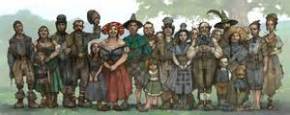Methods of obtaining employment within the creative media industry is most commonly known from word of mouth. The saying ‘It’s not what you know, it’s who you know’ which in some cases are very true for this industry. Personal attributes needed/wanted for this job sector would be an imaginative personality, as well as being somewhat of a leader, which would be true for such roles as producer or director. And the imaginative side would apply to animation artist and scriptwriters. Skills needed would most likely be somewhat talented within using film equipment and knowing how to use them, as well as a knowledge of audiences for someone writing a script and that would want to know who to aim the genre at. Training, such as university and college would apply, but not necessarily, after researching this job role it seems that the interviewer would look more closely at the personal attributes and skills, so in my opinion I would a portfolio would be important, which applies to the educational side of the media industry, however I feel that distinctions in creative media study’s wouldn’t hurt.
When researching job roles in the media, I found that when applying for such job roles as directing, someone would need many different skills and attributes to be taken seriously, such as being a leader, and being able to tell someone what to do and how to do it, and to get it done. Communication would be a big deal with this line of work. Getting into this job would be a difficult thing without the right connections, but working your way from the bottom to the top, for example becoming a runner for a few years and moving up and up and up. When researching this, I found a blog that a young man wrote, explaining how he started from the bottom and worked his way up to more responsibility:
– “My experience in television has ranged from working as a news cameraman to director of an outside broadcast unit (including responsibility for hiring staff). During this time I have helped many people learn how to get themselves established in the television industry.”
– http://www.mediacollege.com/employment/television/find-job.html

